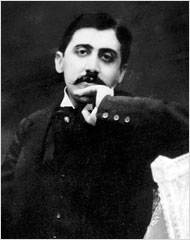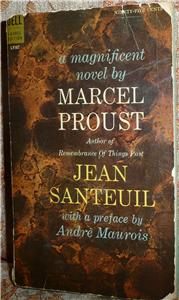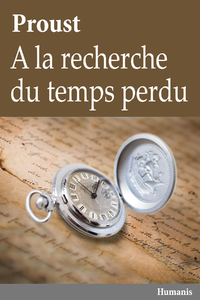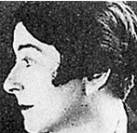Hugo Ball
The German Artist and poet Hugo Ball’s final performance at the Cabaret Voltaire in Zurich marked the beginning of a new genre variously known as sound poems, poems without words, or abstract poems. To construct them language is broken down into its abstract parts syllables and letters reconfigured as meaningless sounds. Poems in which multiple languages are read at once rendering each unintelligible offered an alternative approach to abstract poetry. By destroying everyday language, soundpoems offered both a metaphor for the destruction caused by war and a commentary on the deceitfulness of language. Wariness of the competing nationalisms that fueled the war also led Dadaists to resist any particular language, a primary indicator of national identity.
James Joyce
A Irish Born Novelist Joyce was born at 41 Brighton Square, Rathgar, Dublin, on 2 February 1882. His father invested unwisely, and the family’s fortunes declined steadily. Joyce graduated from University College, Dublin, in 1902; briefly studied medicine in Paris, but his mother’s death brought him back to Dublin. In 1904, Joyce began Stephen Hero, which he later reworked as A Portrait of the Artist as a Young Man
He also met Nora Barnacle,
a chambermaid, and on 16 June 1904 they went walking at Ringsend, at the Liffey’s mouth; Joyce later chose that date for the events recorded in Ulysses. Having briefly shared a Martello tower at Sandycove, Co Dublin, with Oliver StJohn Gogarty, he sailed from Dublin with Nora inOctober 1904. Joyce found work in a language school in Trieste. In 1909, he made two trips to Dublin, to arrange publication of Dubliners, and to open a short-lived cinema. Ulysses, was his masterpiece. Serialised in New Yorkin 1918-20, but was eventually halted by a court action. Joyce returned to Trieste in 1919, then moved to Paris, where in 1922 Ulysses
was published by Sylvia Beach, owner of a celebrated bookshop.
Its portrait of Dublin, and of the Jewish advertisement canvasser Leopold Bloom, revolutionized the novel with its ‘stream of consciousness’ technique;it was not published in Britain until 1936. In 1923, Joyce began the almost impenetrable Finnegans Wake, which was published in 1939. Joyce and Nora finally married in 1931, and in 1940 returned to Zurich, Switzerland before his death in January 1941.


Marcel Proust
Monsieur Proust, born to very supportive parents living in Paris. Proust Father was a doctor and his mother came from a rich and cultured Jewish family. His literary talent became evident during his high school years. He began to frequent salons such as that of Mme. Arman, a friend of Anatole France. Under the patronage of the latter, Proust published in 1896 his first book, Les Plaisirs et les Jours, a collection of short stories, essays and poems.

Proust had begun in autumn 1895 a novel which he later abandoned in autumn 1899 and never finished. Published in 1952 as Jean Santeui l.
l.
After this second setback, Proust devoted several years to translating and annotating the works of the English art historian John Ruskin. He published a number of articles on Ruskin,
as well as two translations
In February of 1907 he published in Le Figaro an article entitled “Sentiments filiaux d’un parricide”, in which he set out to analyze two elements.
Early in 1908 Proust wrote for Le Figaro
a series of pastiches in which he imitated the style of Balzac, Michelet, Flaubert, Sainte-Beuve and other prose writers of the nineteenth century.
During this time he began his novel, although he fully intended to continue to write essays of literary, artistic and sociological criticism. One of these he was devoted to was Sainte-Beuve. In May of 1913 he adopted for this novel the title À la recherche du temps perdu.
Works Cited
1.) http://img.scoop.it/dMAyAAuNBGdTmV7Ckh_hU4XXXL4j3HpexhjNOf_P3YmryPKwJ94QGRtDb3Sbc6KYaccessed Feb 22, 2014
2.)http://www.library.illinois.edu/kolbp/proust/ accessed Feb 22,2014
3.)http://graphics8.nytimes.com/images/2008/02/12/timestopics/Marcel-Proust_190.jpg accessed Feb 22, 2014
4.).http://img.auctiva.com/imgdata/1/8/5/4/6/9/6/webimg/719800580_tp.jpg accessed Feb 22, 2014
5.)http://gallica.bnf.fr/ark:/12148/bpt6k80148w/f11.image accessed Feb 22, 2014
6.)http://gallica.bnf.fr/ark:/12148/btv1b9003523z.r=Le+Figaro+a+tous+les+jours+six+pages.langEN accessed Feb 22, 2014
7.)http://www.biography.com/people/james-joyce-9358676 accessed Feb 22, 2014
8.)http://members.peak.org/~dadaist/English/Graphics/ball.html accessed Feb 22, 2014
9.) http://images.artelista.com/artelista/obras/fichas/7/4/8821374391882658.jpg accessed Feb 22, 2014







